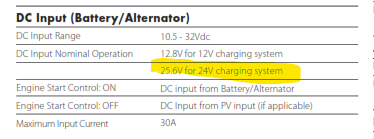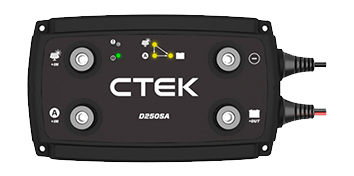Reading another thread about a response from Kisae regarding their chargers, I came across this:
As I understand it, the DMT1250 has a 30A solar
input. That means it will still output 50A at 12V (600W), provided the current from the solar panels is less equal to or than 30A and voltage is greater than or equal to 20V (600W), right?
Compared to the Renogy DCC50S which has a measly PV input of 25V, the 50V max on the Kisae means I can use
these nominally 40V panels in parallel, right? For let's say, 390W+390W = 780W at 40V and 20A. Because I am overrating here, and providing more PV input than the charger can output, I should effectively be getting 600W for longer in the day with this setup than the 600W I'd receive from the DCC50S since that system would be at 17V nominally
and it can only be overrated to 660W as I understand from their manual.





